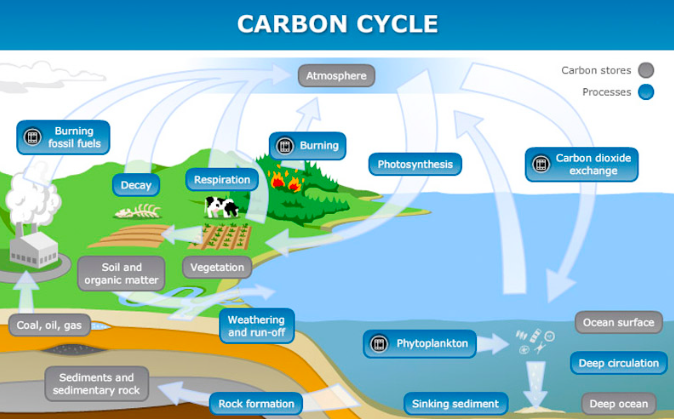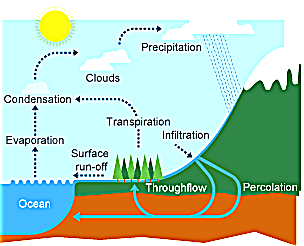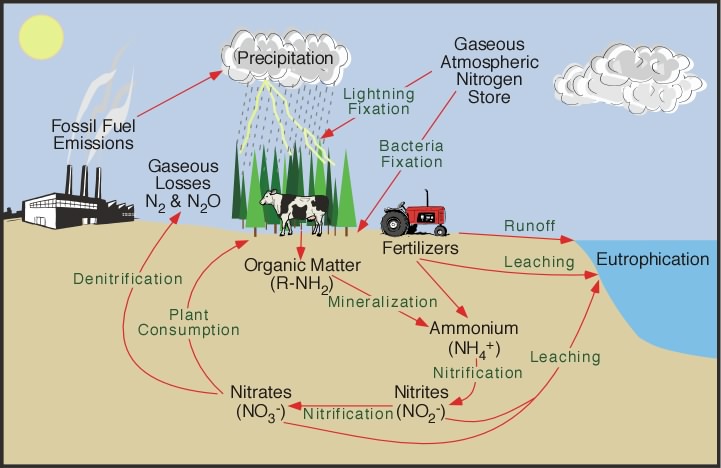Natural Cycles
Material Cycles
__Different materials cycle through the abiotic and biotic components of an ecosystem. __
Physical abiotic factors such as temperature, light and humidity may change, but it is the __chemical abiotic factors __such as:
- water
- carbon
- nitrogen
- sulfur
- oxygen
that can be recycled. They will recycle by being transferred from one factor to another.
Biotic factors are the living things within an ecosystem, and therefore cannot be recycled. They tend to reproduce then die as a whole. However, the components that make up biotic factors may be recycled.
Carbon Cycle
-
When plants and animals decompose, carbon compounds are released into the soil. They are broken down by bacteria, which then releases the carbon back into the atmosphere.
-
Carbon returns into plants through photosynthesis.
-
When plants decay or is burned, they release carbon into the atmosphere in the form of carbon dioxide.
-
When plants are eaten, the carbon is transferred from the plant to the animal.
Water Cycle
Also known as the hydrologic cycle,
-
Sun provides the energy for water cycle to take place
-
Water is found in the atmosphere as water vapour through the process of evaporation, transpiration and sublimation.
-
Water returns to the earth through precipitation as rain, snow, sleet or hail.
-
Water seeps into the ground, and the plants and animals will take up some water. The rest of the water returns to the river and streams, then back into the ocean.
-
Some of the water will soak into the soil and rocks as groundwater. Some will be soaked deep in the soil, filling up the underground aquifers.
- Providing drinking water through precipitation. However the water needs to be distilled through the process of thermal distillation. This removes the salt content in the precipitation, so that pure water is created.
Nitrogen Cycle
-
Nitrates that are taken out of the soil by plants can be washed out of the soil.
-
De-nitrifying bacteria turns nitrates back into nitrogen gas (During anaerobic conditions, such as waterlogged marshes)
-
Nitrogen fixing bacteria can be found in the roots of legumes, and it is used in crop rotation as they turn nitrogen in the air. It turns ammonium compounds into nitrates so that they can be absorbed by plants
-
Decomposers break down proteins from dead animal and urea.
- Living organisms need nitrogen so that proteins can be made.
- How does carbon enter plants?
- Photosynthesis
- Where is nitrogen fixing bacteria found?
- the roots of legumes
Explanation: Nitrogen fixing bacteria can be found in the roots of legumes - What is the name of the process where sea water is filtered so that the salt is removed, and the pure water is kept?
- Thermal distillation


